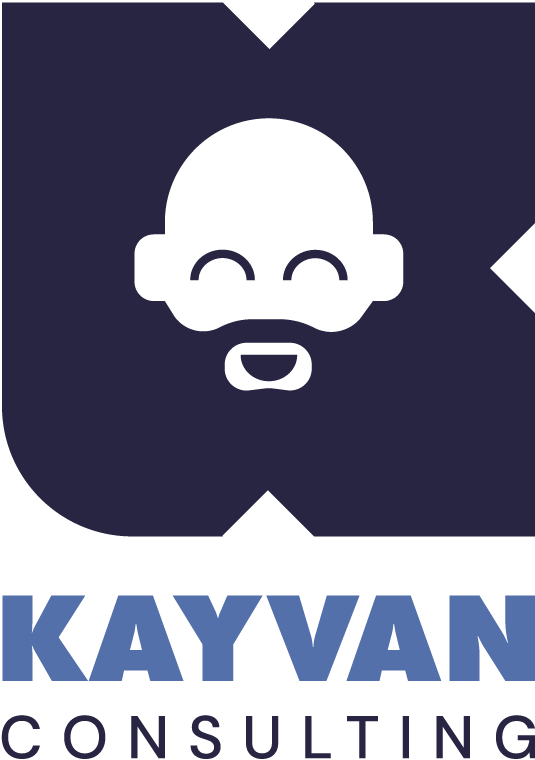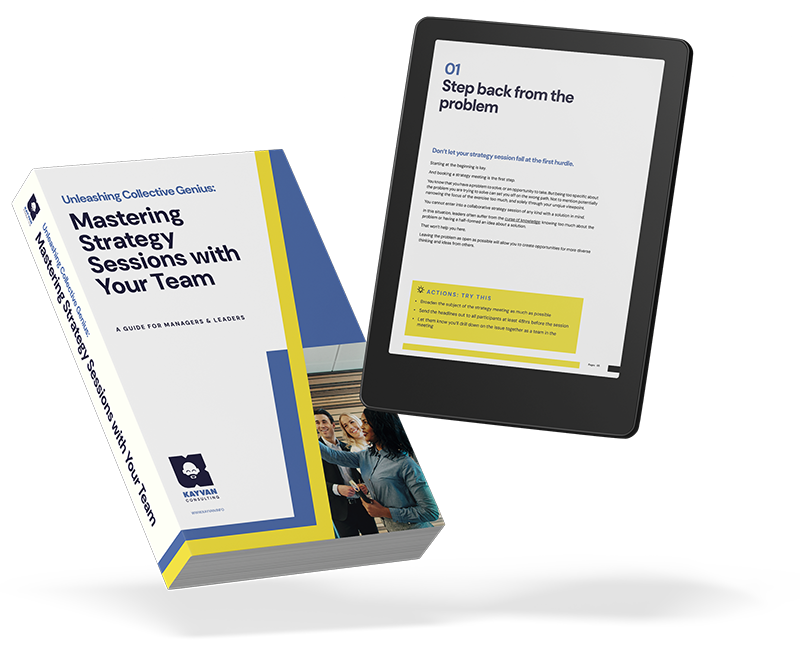A structured, well-run and well-planned workshop is one of the simplest and most effective ways to get a team to collaborate.
But making a workshop engaging for all participants? While simultaneously driving results? This can be tricky.
Correctly designing a workshop, and understanding the underlying rules & principles for success doesn’t happen overnight either. There are a whole host of component parts that need to work together.
However there is one secret trick in my box of collaboration tools that I use in every workshop.
In fact it’s one of many tools that workshop facilitators will typically use in a group setting to get the best out of everyone in the room. It’s super simple and you’ll never approach collaboration in the same way again once you’ve learned this.
A bit of background first though.
I’ve previously written about how just getting your smartest people in a room doesn’t necessarily equate to coming up with great ideas. Nor does it result in making great decisions. But my biggest learning from the failed brainstorm that sent me down this workshopping path? I needed a better approach to getting input from every single participant, not just the loudest or most senior ones.
This led me to the principle of Working Together, Alone.
Learning to efficiently collect thoughts
Collaboration at its most basic can be described as two or more people working together to create or achieve the same thing.
Before participants can begin working together on building, refining, or creating their final outcome, a very important stage needs to occur. That of collection. Collecting viewpoints, ideas, thoughts, concepts, and opinions.
In a workshop or brainstorming environment, this can manifest itself in a number of different ways:
- When the group is listing something
- When the group is describing something
- When the group is framing a problem
- When the group is coming up with ideas
- When the group is brainstorming solutions
- When the group is re-writing something
There are many more of these, but the common thread is that in every one of them, the group is working to create or achieve the same thing.
But the more people in the group, the more viewpoints there are to collect. Therefore an efficient method for collection is required.
An unstructured discussion (which can easily descend into a debate) is typically what will take over and derail a workshop:
- If everyone talks at once, nobody will hear each other.
- If everyone speaks one after another, it will take hours.
- If anyone begins feeding back, commenting, critiquing, or starting a conversation about any of the viewpoints put forward, the time needed increases even more.
Most importantly with any of these scenarios; nobody is afforded the time to think or explore their own thoughts and ideas without getting distracted by others.

Working Together, Alone
The solution here is to get all the participants Working Together, Alone.
Put simply this means that everyone works on the same challenge or answers the same question in real time, but without any interaction with each other. No discussion, no distraction, no collaboration, no critiquing at this stage.
This is done within a fixed time period and participants will write down numerous ideas & thoughts during this time. At an in-person workshop the group would use sticky notes, writing one thought on each sticky. In an online workshop a tool like Miro can be used to replicate this approach virtually.
Once the time is up, the team can come back together and collate their thoughts.
There will often be duplication, but that’s not a problem. The workshop facilitator can de-duplicate the items before the team moves onto the next part of the exercise. The next steps are typically using a voting system, or clustering the items first to help categorise thoughts and draw out ideas.
Benefits of Working Together, Alone.
Introducing this exercise is a great solution for getting more from introverted group members
It gives them the chance to present their thoughts and ideas without needing to create the space to be seen or heard. Similarly, it levels the playing field so that more extroverted or most senior participants are not afforded an imbalanced amount of time or attention.
In some scenarios the responses are then presented back without comment, whereas in other exercises the responses are anonymised entirely.
In order to make this method work it is essential that the entire team are clear on the question they are trying to answer or the ideas they are trying to come up with. Learning how to frame problems into solvable challenges using the “how might we” technique is another key component of effective workshopping. But just writing the question down and having the whole group focus on the same thing will make this approach effective enough.
Enthusiasm & adoption over time
In my experience, this can feel a little odd for participants to begin with.
In a group with numerous lively, outgoing personalities that are more accustomed to approaching collaboration verbally, being asked to sit and silently write their thoughts can be something of a shift! Using background music can help, as well as relying on a facilitator who is capable of managing energy levels in the room.
But given a chance this approach delivers a massively increased number of ideas and thoughts.
For example, in a marketing workshop I recently had a group of 4 participants produce over 50 brilliant blog article ideas in just ten minutes. In their normal approach of discussing ideas in a meeting, they would struggle to come up with 10 ideas in an hour.
This isn’t the answer to all collaboration issues. But using this approach is certainly central to running an effective strategy workshop.
Once you are familiar with it and confident in applying it, you will see more and more practical applications. Teams I have used this approach with have gone on to make use of it in regular group meetings on a weekly basis.
Give it a try and see what Working Together, Alone can do for your team.
And if you’re interested in seeing how an experienced Workshop Facilitator can help solve problems within your company, get in touch to chat!




